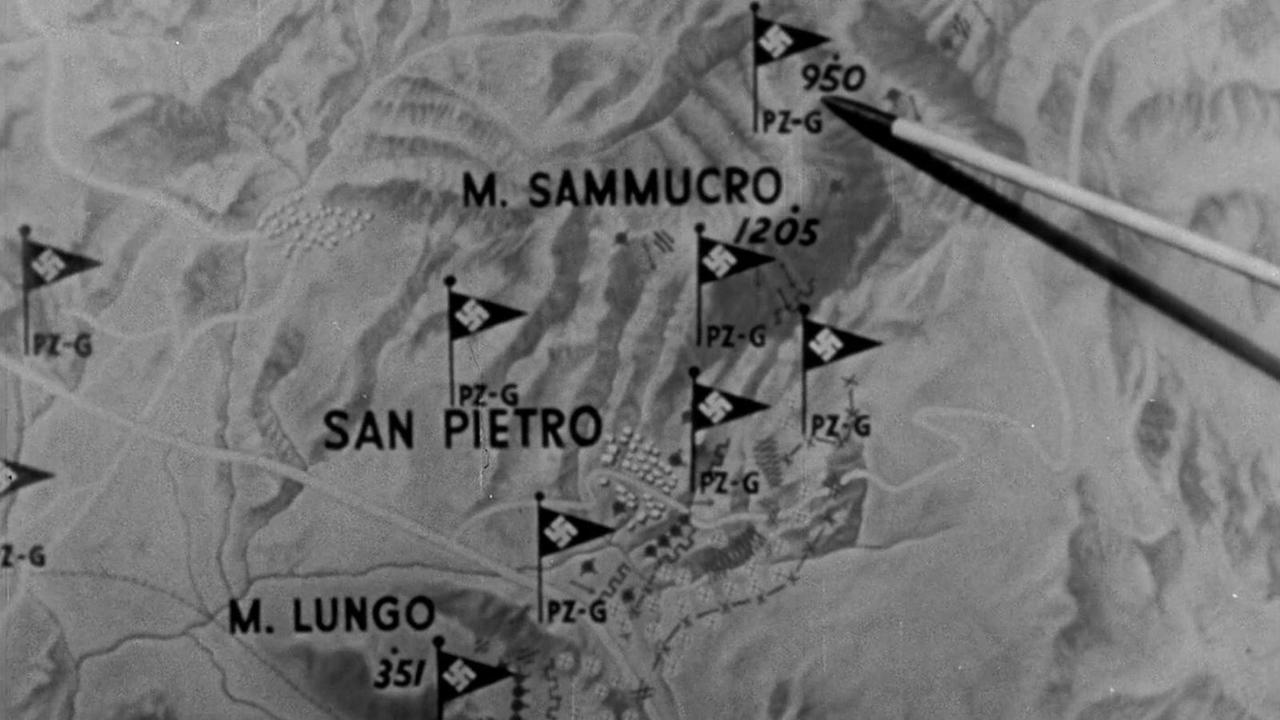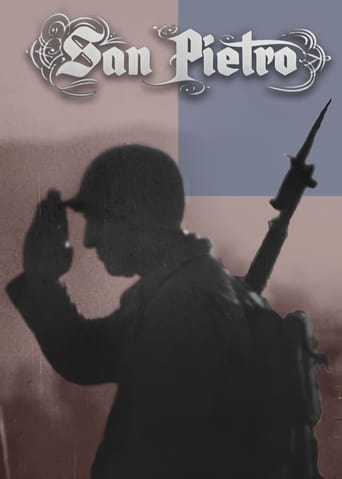

In honor of Memorial Day, I decided to watch some John Huston documentaries made during World War II. Before the film begins, a General Mark Clark makes some comments on the worthiness of what is depicted in the picture. Then narrator Huston guides us through what went on in the title village of Italy as the American soldiers try to break the German blockade of our troops. Quite compelling battle footage even though a later disclaimer mentions how staged some of it was before and after the actual battle. There's also much somber footage of dead soldiers and many survivors digging graves. But there's also some joyful scenes of women and children smiling at their rescue and many grateful local men as well. I have to also note how surprised I was at some breastfeeding shots as well! This seemed even more worthy of this commemorative day than Huston's previous doc, Report from the Aleutians, as the stakes were higher. So on that note, San Pietro is recommended.
... View MoreOne reviewer commented that he didn't know how this film ever got released during World War II. It almost didn't.First, you need to know that Hollywood actors, directors and producers were heavily recruited by the War and Navy Departments (the Defense Dept. is a post war innovation). These celebrities got to know a lot of the senior military personnel through their activities in Stage Door Canteens, the USO, recruiting and bond drives. Few were closer to the military top brass than Orson Welles, a close friend of Houston's.Welles told this story on, I believe, a Dick Cavett Show in the late 1960s or very early 1970s. I repeat it as I remember it.According to Welles the War Department censors did not want San Pietro released. They felt that the film was too graphic and that it might have an adverse effect on support for the war. Through Welles' personal friendship with General George C. Marshall he and Houston arranged a private screening at the Pentagon for Marshall, his staff and the censors. Following the screening Gen. Marshall stood up and ordered that the film be released. He said that it was an accurate depiction and that war was horrible. He felt that the American people needed to know that horror lest they romanticize war and become fond of a monstrous act of inhumanity.So San Pietro was released. If Welles exaggerated his role, I can't say. Certainly Houston didn't contradict him. If I have misremembered the tale in some particular, it does not change the fact that San Pietro owed its release to the intervention of Marshall.Even today San Pietro is worth seeing. As has already been suggested, it is a good complement to Lewis Milestone's All Quiet on the Western Front. I would suggest that it also ranks with two other great movies whose subject is World War I. Those movies are Jean Renoir's Grand Illusion and Stanley Kubrick's Paths of Glory. And, although it doesn't quiet rank with the three films already mentioned, Philippe de Broca's King of Hearts belongs in the insanity of war film festival we seem to be constructing here. Finally, I would point out that earlier wars are often stand ins for the more recent one as in M.A.S.H. Korea stood in for Vietnam.
... View MoreThese comments helped me a lot' It is impressive in describing both the events and the atmosphere of a desperate and costly struggle, and it is memorable in preserving its effect on those who had to live through it.This documentary movie is about the battle of San Pietro, a small village in Italy. Over 1,100 US soldiers were killed while trying to take this location, that blocked the way for the Allied forces from the Germans'Well i do watched film not the whole of it but i cant get the documentary devices the filmmaker used, uniqueness in the film e.g in Triumph of the Will everyman has got Hitler' s hairstyle and how the editing together with shots relate to what the film is about. Also why is that women and children are shown smiling? Which type of shots are mostly used? What causes this battle? Who won the Battle and what are the effects brought by this fighting apart from people dying? What is the filmmaker trying to explain to the world?Please anyone explain to me.I will be happy... Really want to know about this film Thanks a lot
... View MoreJohn Huston's World War II documentary on the battle of San Pietro is easily up to the high standard that he set with his numerous classic dramas. It is impressive in describing both the events and the atmosphere of a desperate and costly struggle, and it is memorable in preserving its effect on those who had to live through it.Even on a purely historical level, this would serve as a valuable description of one stage in the grueling Italian campaign, one of the war's least-remembered and least glamorous aspects. The narration is very efficient in detailing what the battle was about, what happened, and why it happened. It puts everything into the perspective of the war as a whole, and it also provides a look at the nature of the Allies' slow, grueling, costly progress up the Italian peninsula.On a dramatic level, it is even more effective and memorable. Without forcing anything, without resorting to ploys of any kind, it brings you into the world of the unfortunate foot soldiers on whose backs and blood the fate of the battle rested. Huston's narration is flawless, using evenly measured tones to describe events in such a way as to allow them and the pictures of them to speak for themselves - and they speak in a powerful way.Most of the footage must have been taken at considerable risk, and while there is nothing fancy about the techniques, it's impressive how much it captures. The soldiers slowly crawling along rocky heights, the pounding of heavy artillery, the frightened civilians hiding in caves, and much more, are all vividly captured. It's hard to think of another documentary then or now that succeeds so well at what it set out to do.
... View More